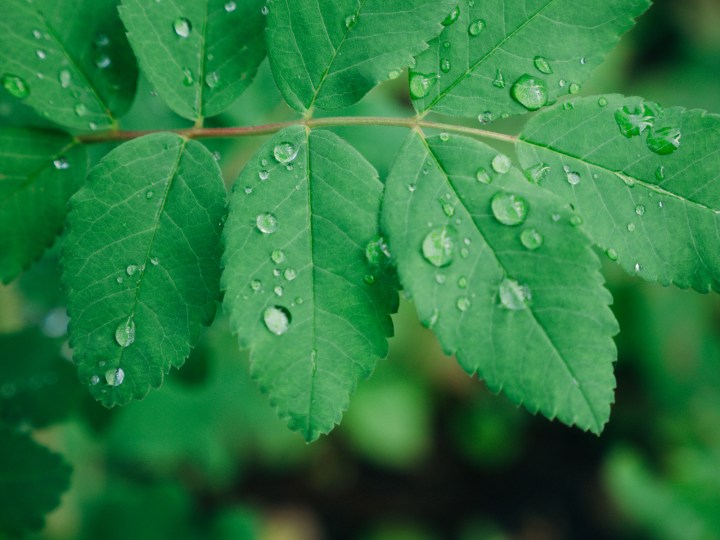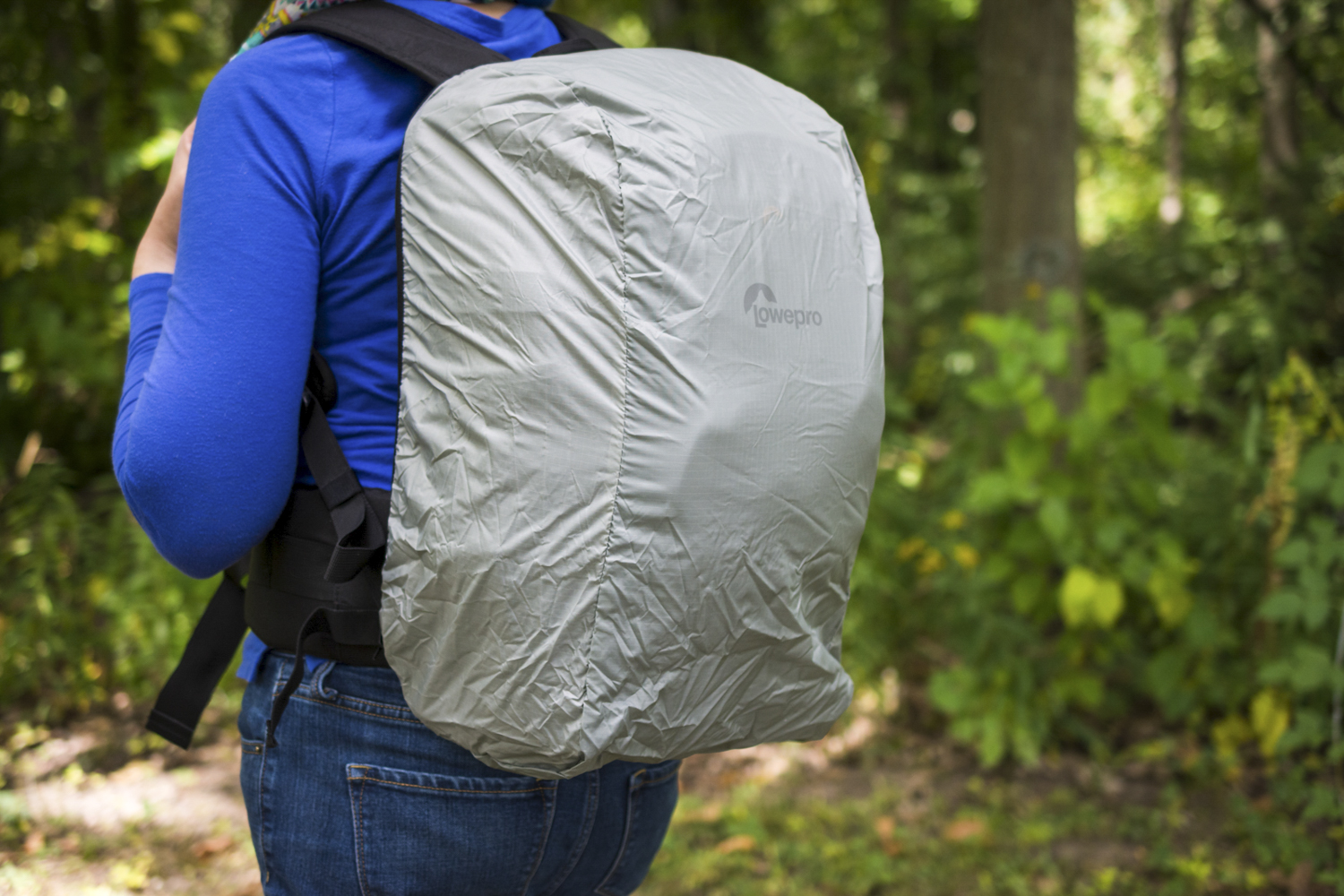As a photographer, you don’t need to be a storm chaser to appreciate what a little inclement weather can do to make a scene more interesting. Clouds can add texture to the sky, while rain can make a dull surface reflective — in fact, it’s a common practice in Hollywood to hose down streets to get the wet pavement look even on dry days. But if you want to be able to shoot in the elements, you’ll need to protect your gear — or else that amazing rainy day photo could be accompanied by an expensive repair bill. So how do you protect your camera and lenses from the rain, snow, or cold without just playing it safe and staying indoors?
Shooting in bad weather is about three things: Understanding your gear, knowing how to protect it, and following a few camera care basics.
Know your gear
Understanding the limitations of your gear will both help you capture better photos and extend the lifespan of your current camera. Many high-end cameras are weather sealed, which means they can withstand rain and snow without additional protection — but this does not mean they can be submerged. Ensure that both the camera and the lens, as well as any other electronic accessories like a flash, are also weather sealed before heading out without additional protection. Large amounts of water can potentially still damage a weather-sealed camera, however, so even these high-end models are best used with a rain cover in bad storms.
Cameras, lenses and flashes without weather-sealing should use a cover or another form of protection even in light rain and snow. Without protection, even small amounts of moisture can find their way into the camera, causing damage.
Chances are, you may already have some bad weather accessories already in your camera bag. A lens hood may be designed for keeping out lens flares, but that extra ledge helps keep the face of lens clear from rain drops and snowflakes. Keep several dry lens cloths on hand, as well.
Keeping camera gear safe in bad weather
Just like there are dozens of options when it comes to picking out a new camera, weather protection gear isn’t a one-size-fits-all solution, and higher-end options can be quite expensive.
With each option, however, there’s one more thing to bring along — a towel. An ultra-absorbent, non-abrasive towel such as microfiber works best (you can often find them in the car care section), but you’ll need to bring along something to wipe the front of the lens and the sides of the camera if they get wet. You’ll also need a spot to keep that towel away from the rain, preferably in a waterproof camera bag.
The do-it-yourself solution
Keeping rain off your gear doesn’t have to be expensive. Photographer Chase Jarvis suggests using a shower cap to help keep rain off a camera body. Some photographers use Ziplock bags or another type of plastic bag with holes cut for the lens. (Just make sure there are no leaks before putting your camera inside, because… yikes.)
As always, duct tape is your friend here, too — we have used it to secure an umbrella to a monopod on at least one occasion. You could also rig a backpack to hold an umbrella, leaving your hands free to work the camera. Depending on the backpack (and with a large enough umbrella), this could be done with the bag’s tripod strap system, or by taking this hiker’s idea of using cords to attach the umbrella. DIY camera rain covers are seldom pretty, but they’re inexpensive — and some of them can be crafted quickly if some unexpected rainclouds roll in.
Official camera rain covers
Photographers don’t have to choose between putting a garbage bag over their camera or spending hundreds on rain gear — there are a number of inexpensive camera rain covers that are worth spending a few dollars on for better protection and easier access to controls.
A camera “poncho” is much like a DIY plastic bag, only it is designed to fit snugly over the camera. Most use a drawstring to cinch the cover securely around the lens, and there’s usually an option to pop the viewfinder through a hole in the back, so you have an unimpeded view. The plastic is generally thin enough to access most controls, or may have a side opening to put your hand inside the cover. The OP/Tech rain-sleeve two-pack costs just $10, and while not expressly made for the greatest durability, these sleeves should last through multiple uses.
Such plastic covers don’t take up much space in a camera bag, so they work well for photographers who don’t often shoot in the rain but want to remain ready, just in case.

For photographers that spend more time in the rain, upgrading from poncho-style to an actual camera “jacket” is another option. Several accessory companies make these, using waterproof materials similar to a a raincoat. Likewise, these options are designed to last longer than the plastic covers, but they are more expensive. Vortex Storm Jacket, Ruggard Rain Shield, and LensCoat all make camera jackets, which range from $25 and $75. Think Tank’s Hydrophobia-series rain covers are built with professional photographers in mind, with support for long lenses and tripods, and start at around $120.
Hands-free umbrellas
A newer category in rain protection, a hands-free umbrella keeps away the rain while leaving your hands unencumbered — without a messy DIY duct tape job. These solutions work best on rainy days without much wind, or the wind could push some of the rain towards the gear. One option is an add-an umbrella holder that attaches an umbrella to a monopod or tripod. Tripod umbrella clamps range from to a $240 high-end model by Novoflex that works with a $145 umbrella.
Not shooting with a tripod? The Nubrella ($75) is an umbrella that you wear that retracts into a backpack when not in use. It might make you look a little silly, but that’s hardly a high price to pay for getting the shot.
Don’t forget about the gear you’re not using — and yourself.
Protecting the gear that’s not in your hands is essential, too. Make sure your camera bag is waterproof, or use a rain cover. Manhy bags include rain covers, others are waterproof without them, and some aren’t ready to get wet at all. Know what type of bag you have before you ruin your extra lenses.
While keeping gear dry is a priority, don’t forget about keeping yourself dry, too! No, you don’t have electronics insides to fry, but the more comfortable you are, the longer you’ll be able to stay out and shoot.
If you’re going to be working in cold conditions, bring plenty of extra batteries — batteries don’t like being cold and will discharge more quickly. Keep the spares in an inside jacket pocket, where they’ll be protected from the elements and will be kept warm by your body heat.
Understand basic camera care
Protecting your gear in bad weather doesn’t stop once you’ve stepped indoors. Never put a camera away while wet, dusty or super cold. Be sure to wipe down the camera with a dry towel. Ideally, you should also leave the camera outside of your bag for a few hours to allow any excess moisture to dry out.
The same idea applies for shooting in cold weather. Putting a camera away wet or cold can create condensation on the inside of the gear — and that’s not something you can just wipe away with a towel.
DSLR and mirrorless shooters should also avoid swapping lenses in wet (or even dusty) conditions — head for cover and make sure the camera is completely wiped down before making the switch. The same is true for swapping batteries or memory cards. Watch out for any accumulated water around the battery and memory card door seals, and make sure they are dry before you close them up again.
Don’t be a fair-weather photographer — know the limits of your gear, add weather protection accessories and understanding a few camera care basics. For a few bucks, you can easily protect your gear to get that rainy day shot.







